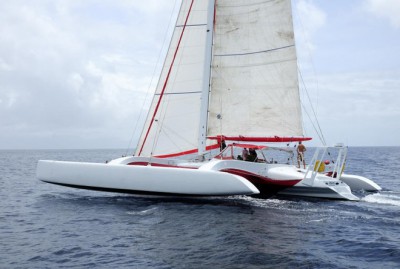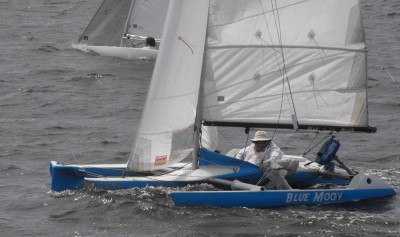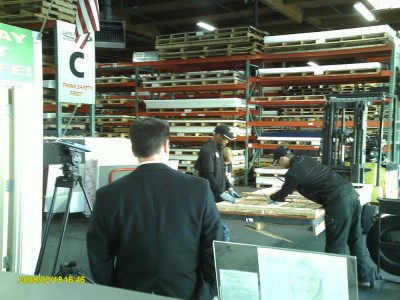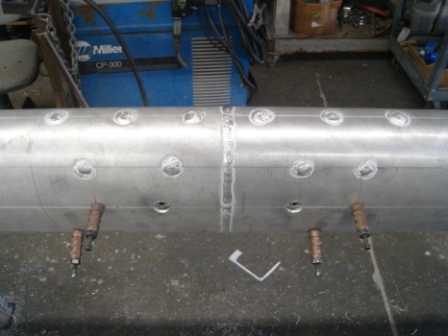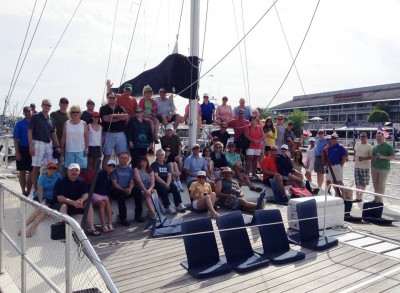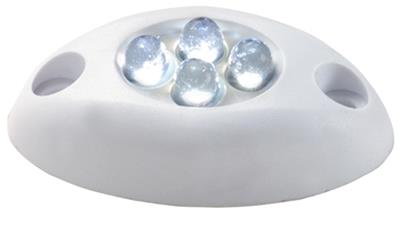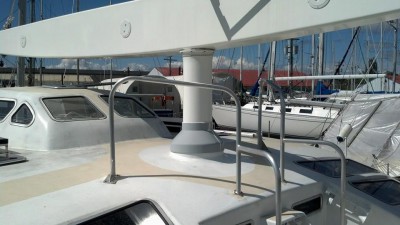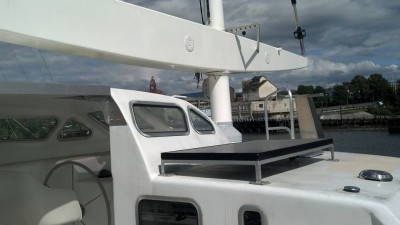I see my friend and my structural engineer David Jones is a rock star in Pro Boat magazine this issue. Cool. I’ve known David since the 80s at MACAM conferences. David always understood that my customers wanted the engineering without having to pay for it. So I would do the calcs in Excel typically, send to him, and he would agree or not. See issue #149. David knows things.
Monthly Archives: May 2014
Rule of Mixtures-Wingmast
I have been advised on the steamradio multihull blog to keep quiet when I see some preposterous assertions made there by famous designers. I always think that someone will say something; lots of the guys there seem to know things. But it rarely happens.
One really stuck in my mind though. A few months ago Kelsall noted that he uses 30% carbon fiber in his wing masts. I kept waiting, but nobody questioned him on that. So maybe school has to be in session.
First, surely everybody knows that a long, slender composite part like a wing mast must have at least 70% of the fibers in 0 degree. Ted van Dusen noted to me when he built a couple of critical masts for my boats, that had to be built with too small diameter, he went to 80% in 0 degree, just to be sure.
OK, so if all the 30% carbon was in the 0 degree, that is still less than half the 0 degree fibers as carbon.
That is bad, bad, bad. My readers all already know that the stretch to failure of carbon fiber is around 1%. And that of E-glass is around 6%. The carbon in the wing mast would have to fail completely before the glass even helped with 20% of the job. I was dying to know; did he not believe in 70% zero degree? Or in rule of mixtures. Getting everything possible right the first time is important.
Ron Reichard explained that with carbon in the 0 degree, glass can be used in the off-axis fibers. That lowers cost and even adds a bit of resilience.
I will have more on wingmasts next month, including a study that I co-authored with Dr. Paul Steinart on a FEA study of wingmasts, and composite hounds.
Roger’s Little Trimaran
Universal Plastics
I have an ancient Universal Plastics catalog. It is full of all the data on every kind of plastic. They are now called Laird Plastics and the catalog now is only online. But they still sell everything plastic. 60 locations in US and Canada.
Make that Mast Fit in a Container
The mast on my Geko was 60′. When Haiko bought that boat, the mast had to go into the container. Haiko is a master machinist, so I watched him do it. He recently topped up my recollection with the procedure.
“As you said: the mast was indeed welded together from 2 pieces. It was done with 2 inner-plates made from the same mast profile on port and starboard. By sanding the paint you could see the different structure of the welded aluminum.
Three rows of holes measuring about 3/4 of an inch were drilled in the outer profiles and to the welded plates.
So we had to drill holes of 30 mm through and around them as the weld is always bigger than the initial hole if done properly.
The mast was cut very attentive (carefully) 3 mm under the weld, to know sure it would part while trying not to touch the inner-plates.
Back in Holland 3 different series of props (nuts? I will find out)where milled 3d for inside as well as for outside.
After welding we still had to do some sanding on the inside. The mast is now demountable in two parts for legal transportation on the road.”
a Crowd on Palmetto Breeze
Imtra Boat Lights
One thing Alex reminded me was that he has gotten many of his LED lights at bargain prices (like $2 each) from the Imtra website clearance items tab. http://www.imtra.com/lighting.htm
And don’t forget Craigslist he would also remind.
a Visit with Alex Again
Fiber Orientation
By now every boat builder knows that fiber orientation is critical to laminate strength. And I’m sure everybody knows that 34 oz triaxial for example has a bending strength of some 65,000 psi in the 0 degree, and about 20,000 psi in the 90 degree orientation, hand layup. And unidirectional fabric will have some 100,000 psi bending in the 0 degree and maybe 3,000 psi in the 90 degree.
But that is not all there is to it. There has to be off axis fiber even if it performs less well. I first learned about that in Tsai’s composites class in ’90 I think it was. In tension it would not matter, but in compression and bending, the hard-working 0 degree fibers have to be kept in column, as it were. The trick is to have no more than 3 zero degree layers stacked before adding an off axis one. Then you can add three more.
I have visited mulithull build sites where I have seen plans from famous designers with like, 10 or 20 layers of 0 degree stacked up, and no off axis fibers. Don’t they know? And they charge many times what I do.
Boat Builder’s Anthem
One of my builders (37″ cat & 43′ cat) Jon Reed has put a boat anthem on the U-Tubes. He has great earlier work also.

